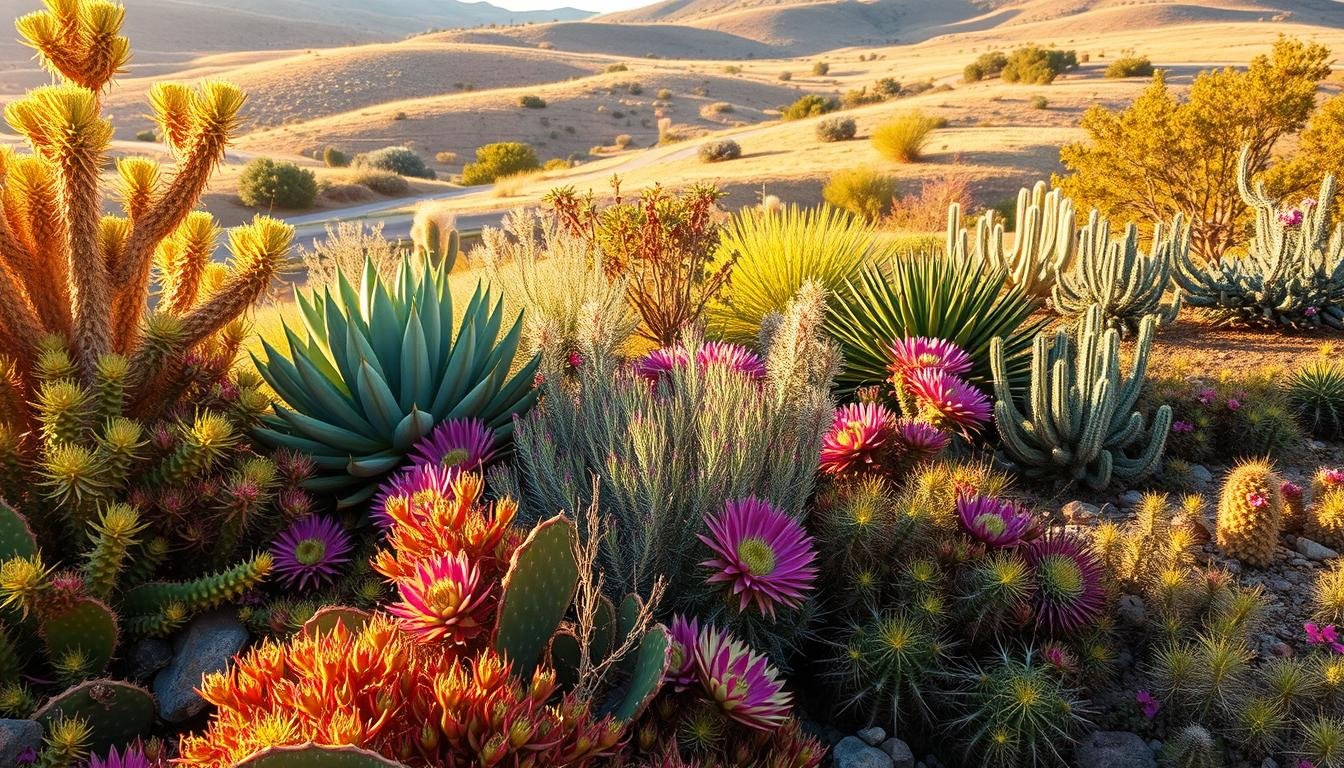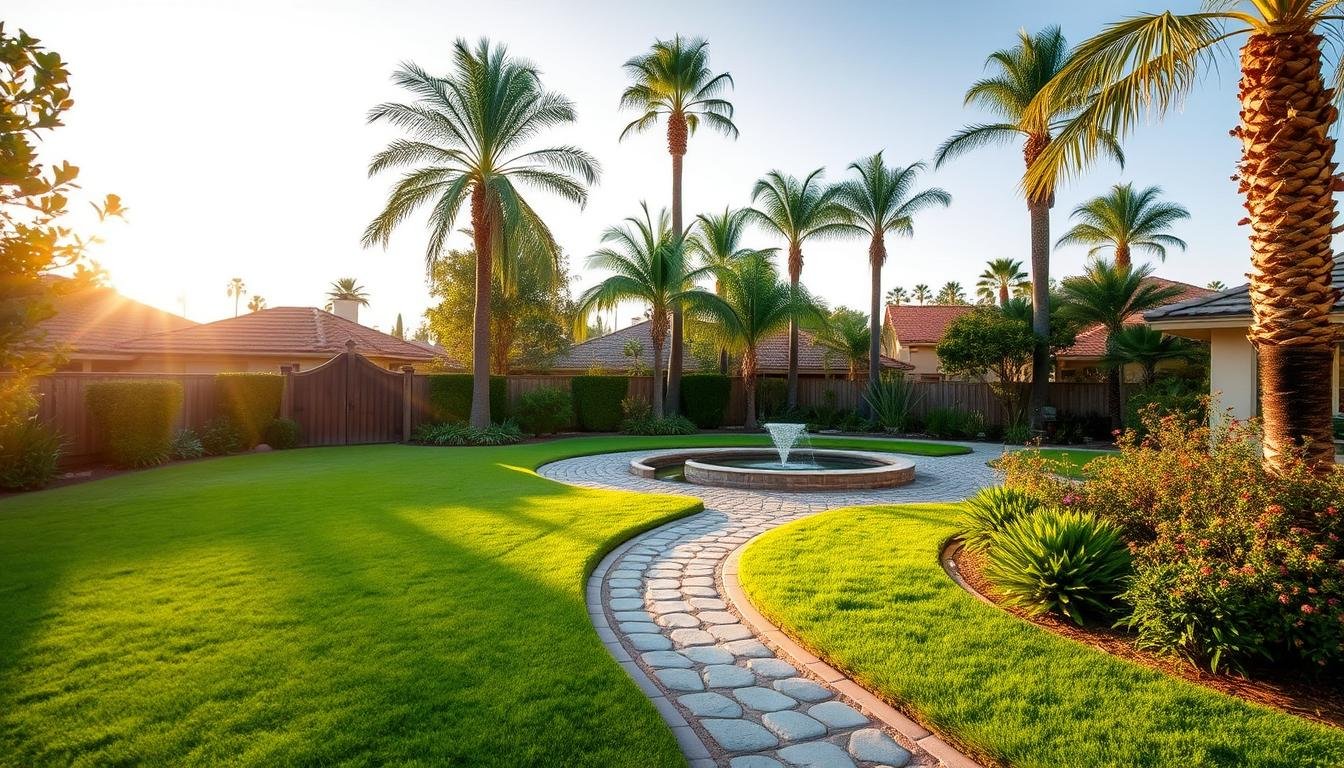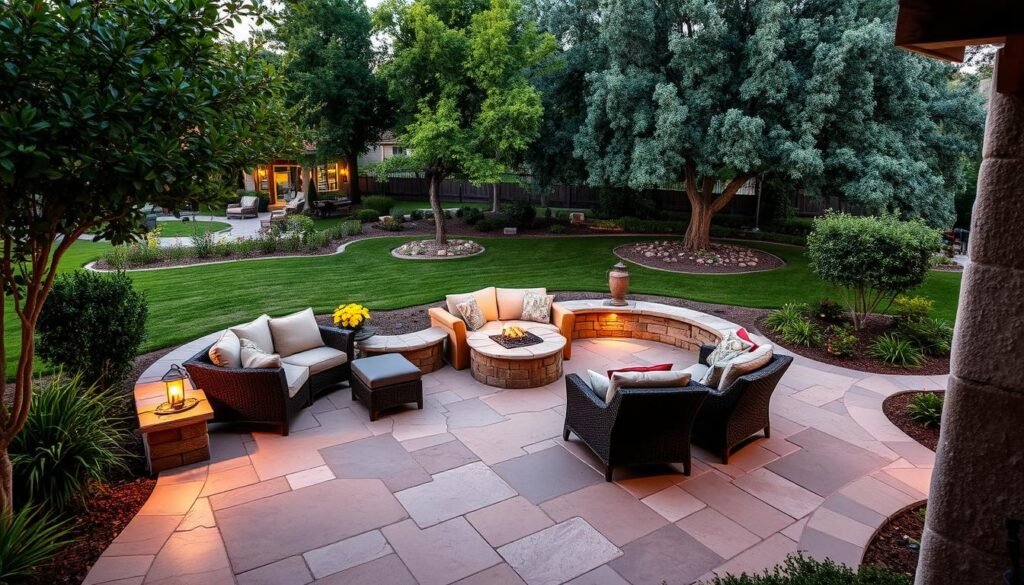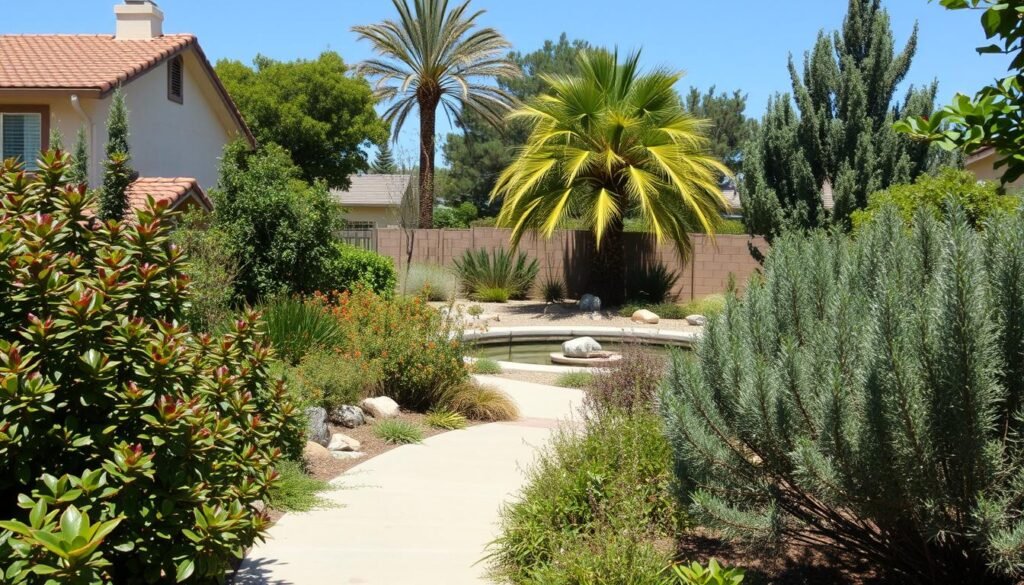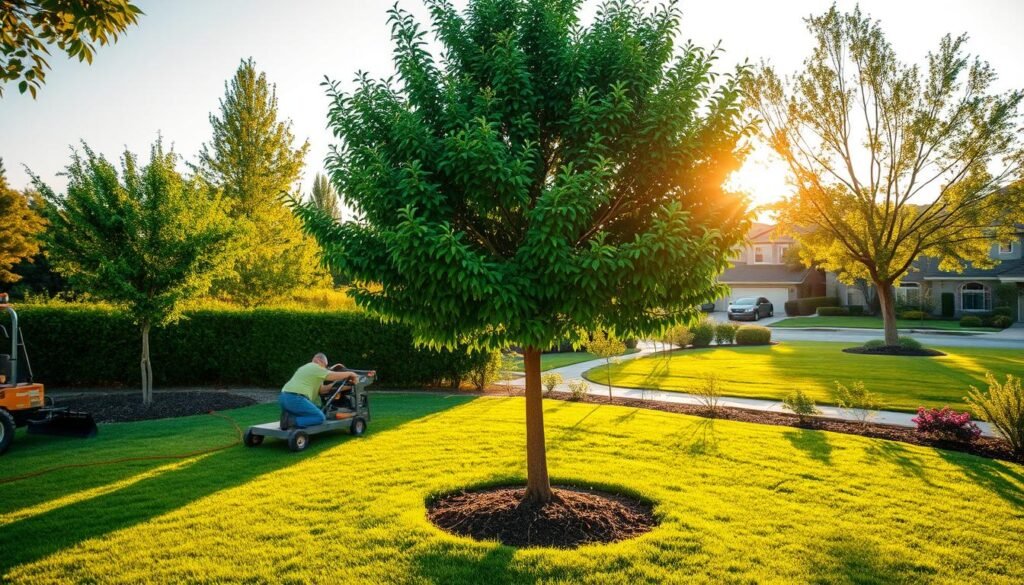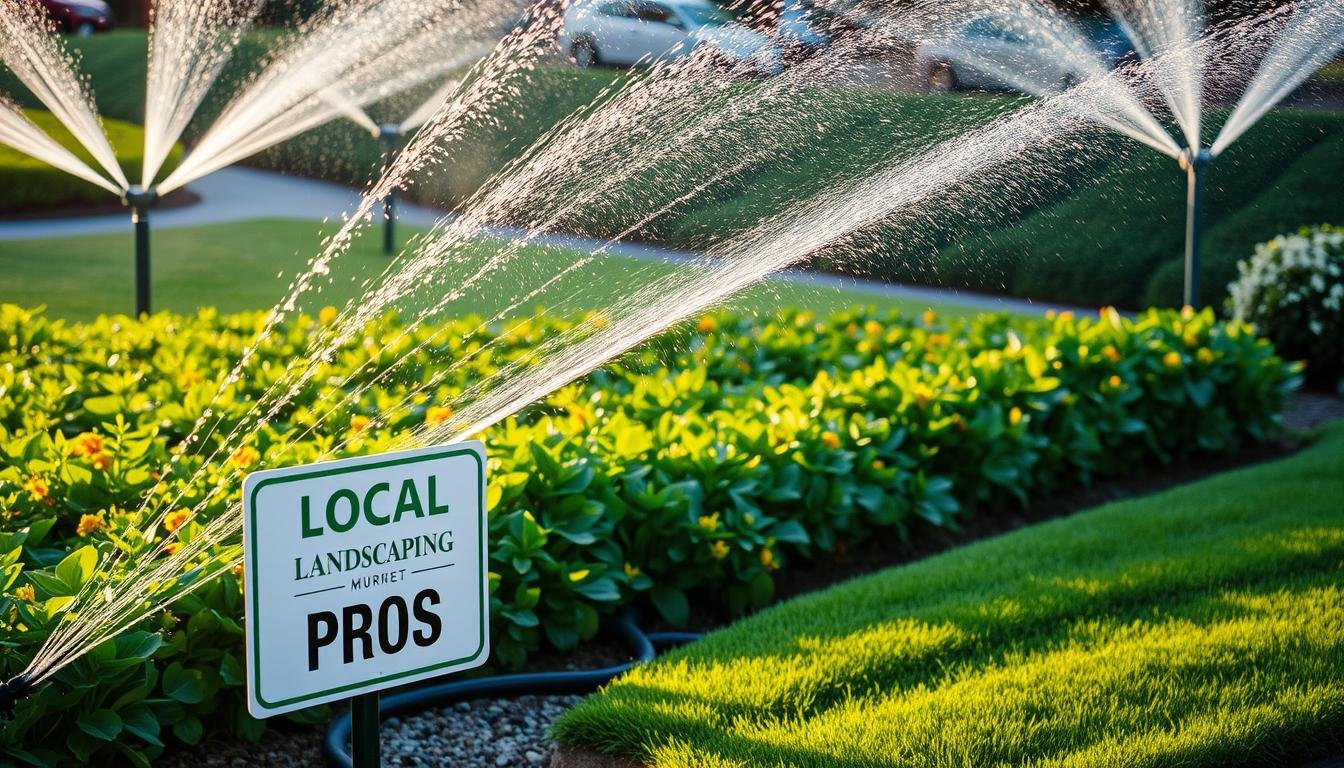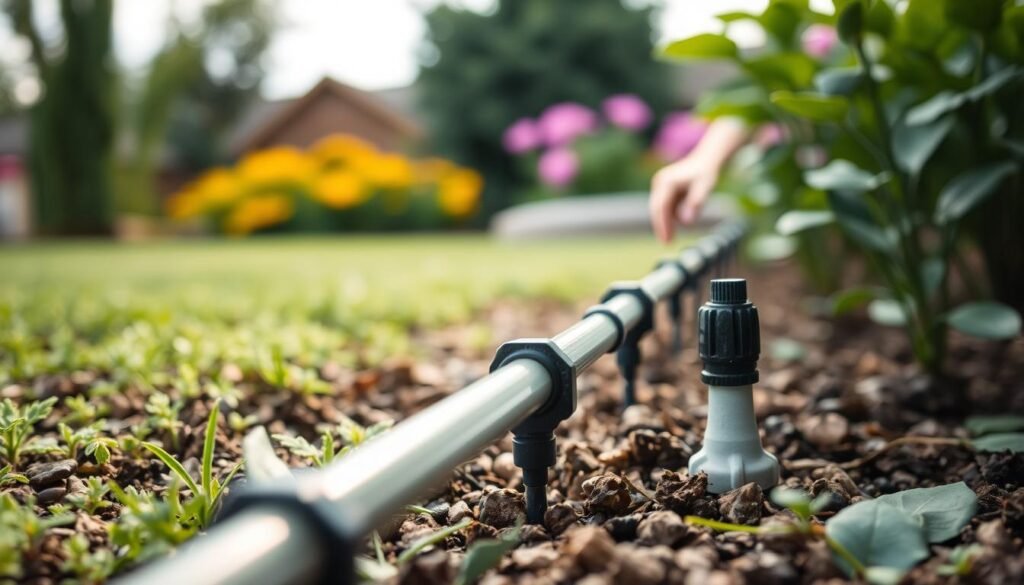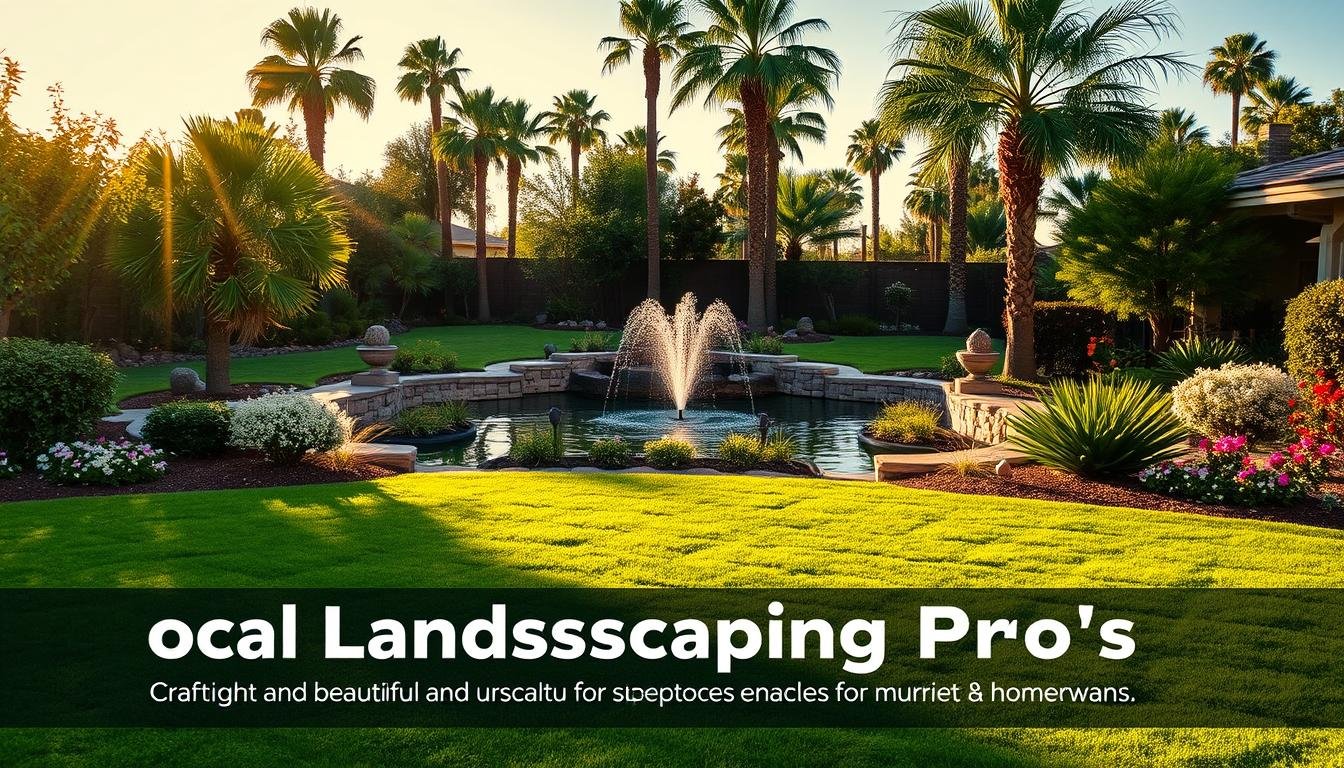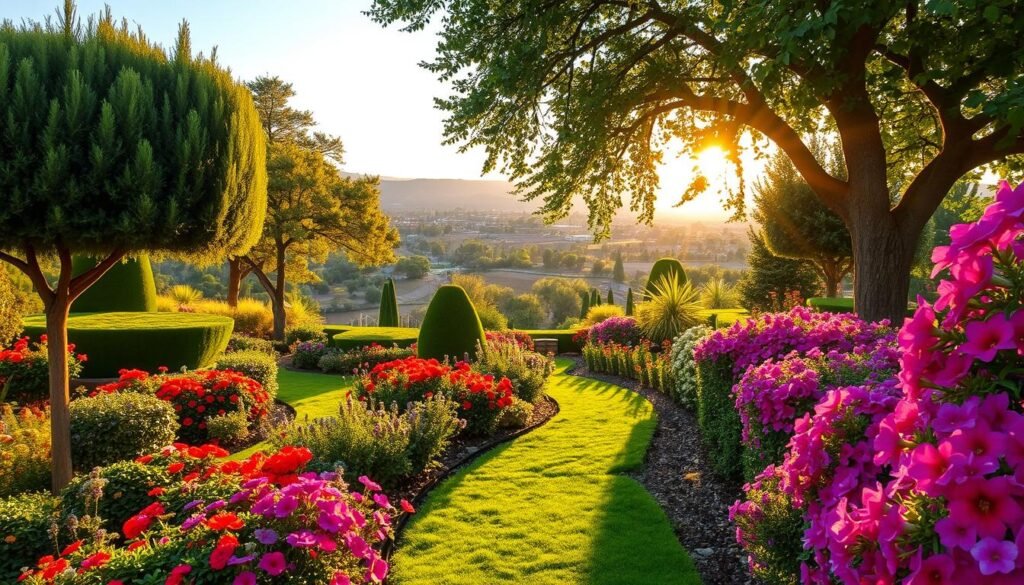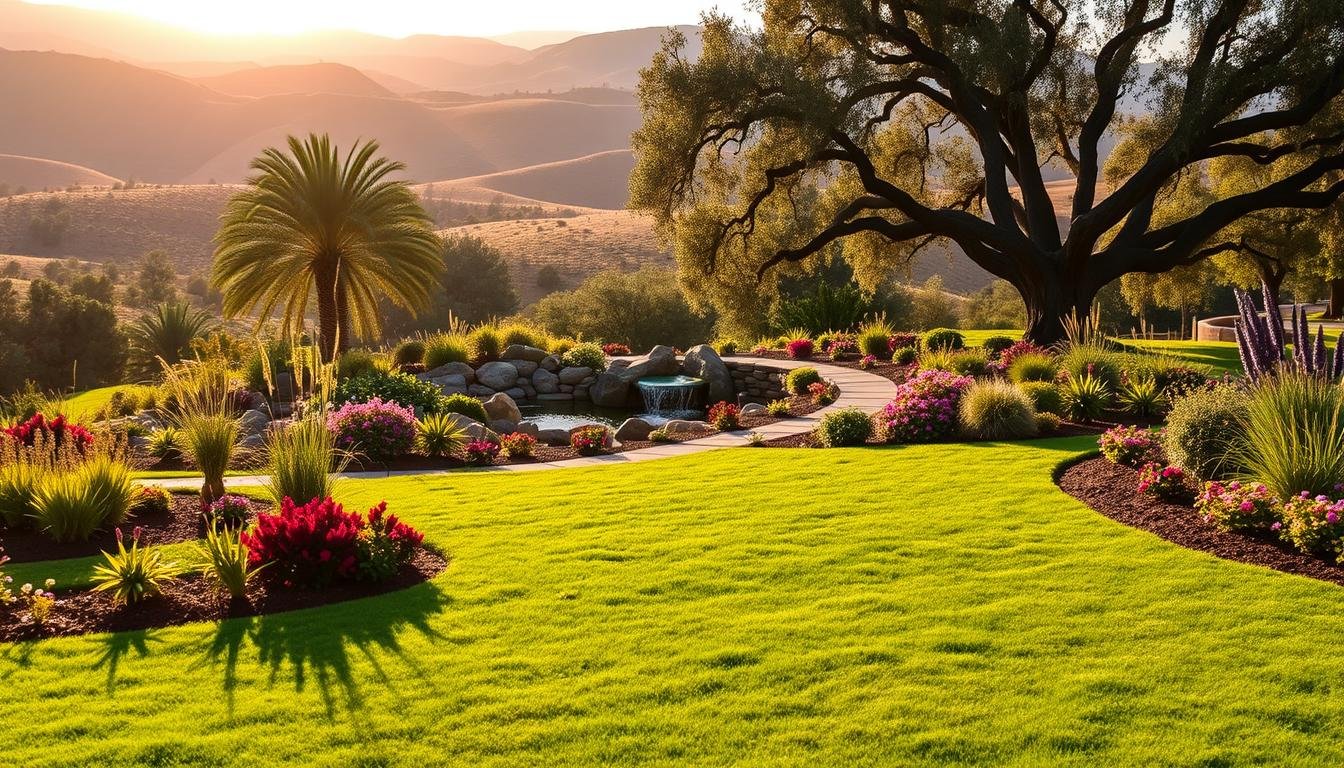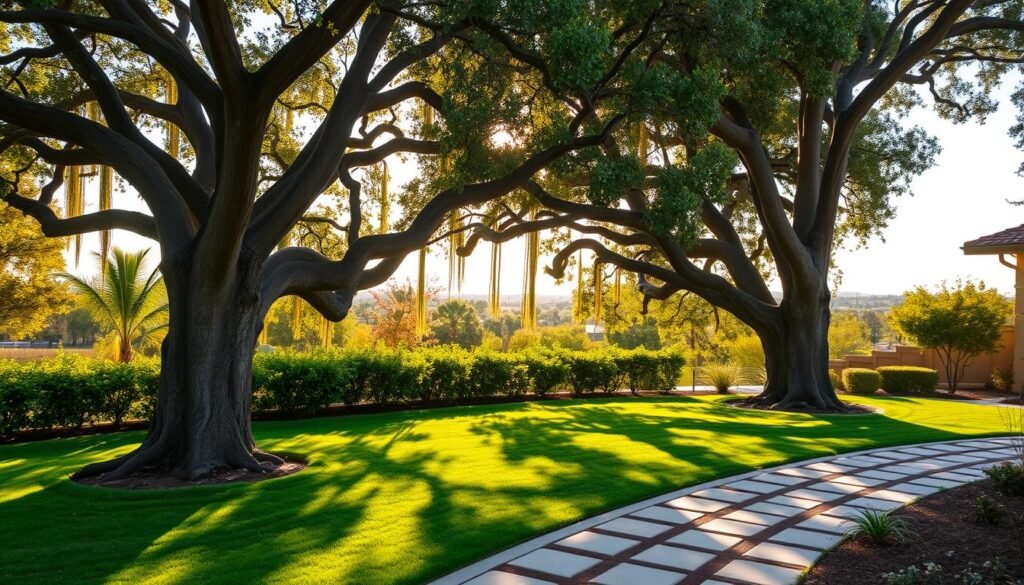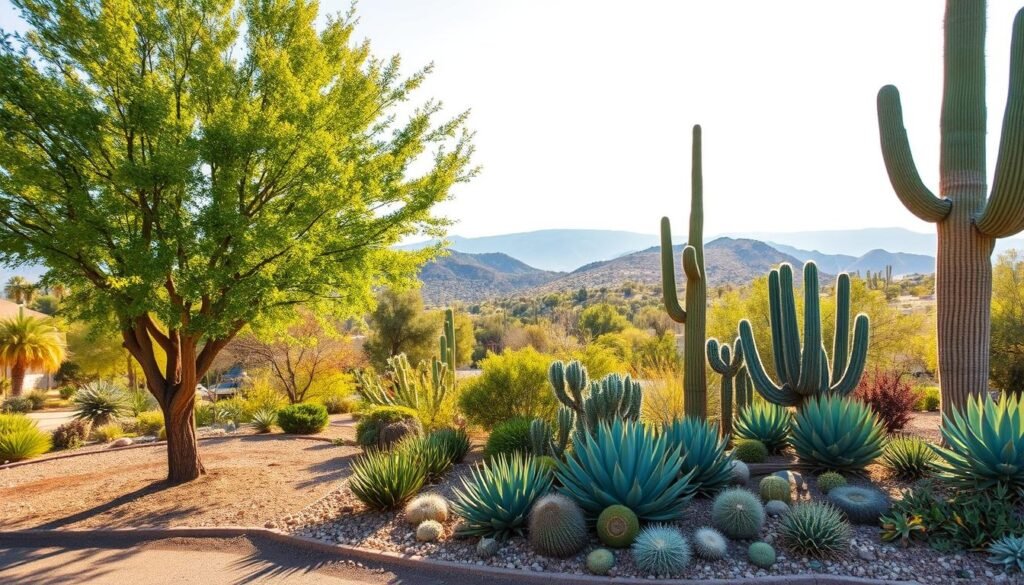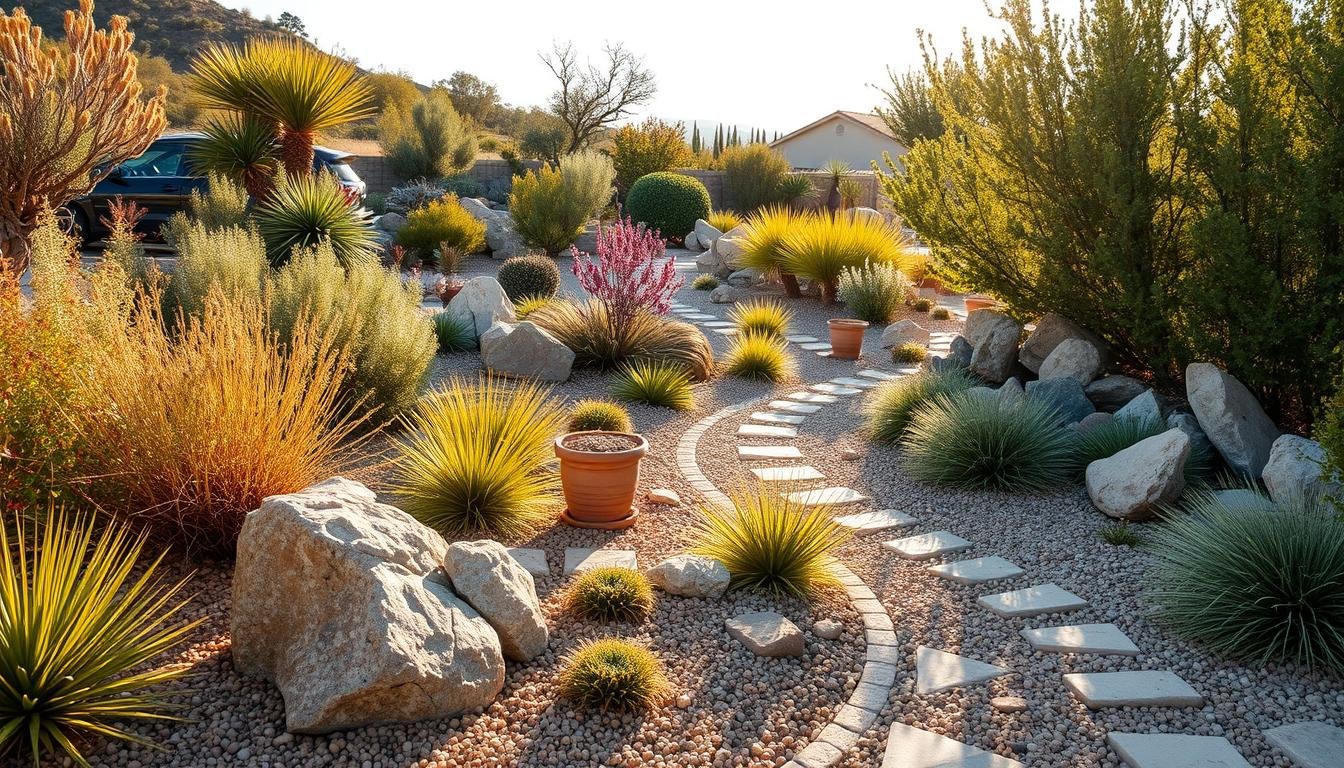Over the last decade, more people are choosing drought-tolerant landscaping. California’s extreme climate, with its driest months in 2013, has led to this change. Homeowners in Murrieta are now opting for xeriscaping and water-wise gardening.
Native plants like Arctostaphylos (manzanita) and succulents are great for a low-maintenance yard. They save water and look beautiful. Using drought-resistant plants can also lower your water bills and help save our natural resources.
Landscapers are now focusing on fire-resistant plants near homes in wildfire areas. This shows a shift towards safer landscaping. Native, drought-resistant plants in your yard mean less need for pesticides and fertilizers. This saves money and helps the local ecosystem.
Key Takeaways:
- Drought-resistant plants are ideal for Murrieta yards due to the region’s semi-arid climate
- Choosing native plants can help create a beautiful, sustainable landscape that requires minimal maintenance and water usage
- Xeriscaping and low-water landscaping practices are gaining popularity among homeowners and landscapers in Murrieta
- Drought-tolerant plants can significantly reduce household water bills and contribute to the preservation of natural resources
- Incorporating fire-resistant plants and native species can enhance safety and reduce maintenance costs in wildfire-prone areas
Understanding Drought-Resistant Plants
Drought-resistant plants are great for Murrieta’s sustainable landscaping. They can survive with little water, fitting well in the local climate. Adding native and climate-friendly plants to your yard makes it beautiful and saves water, helping local wildlife too.
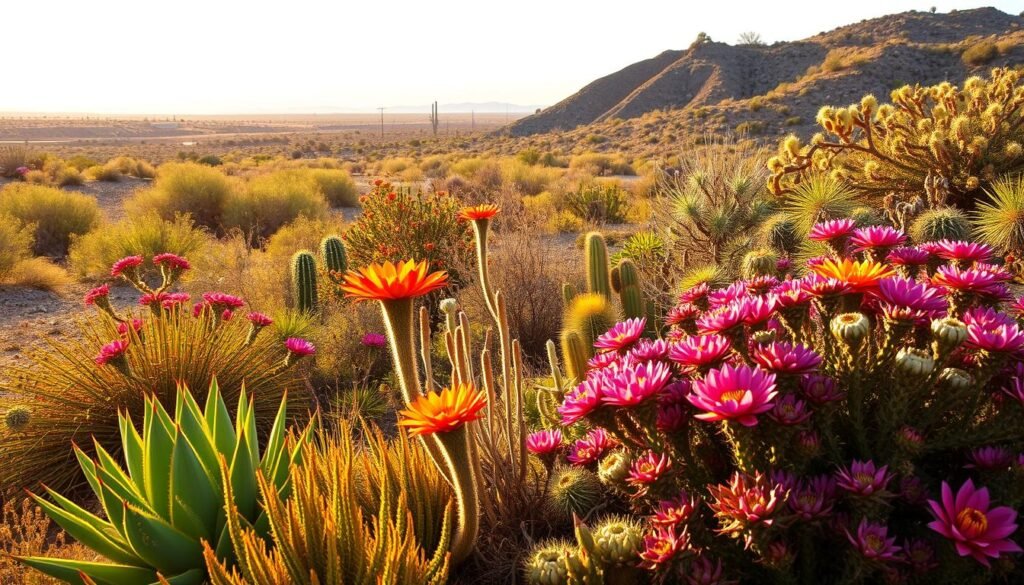
What Are Drought-Resistant Plants?
Drought-resistant plants are made for dry places. They have special features to live with little water. This makes them perfect for gardens that use less water.
- Deep roots to find water deep in the soil
- Waxy or hairy leaves to lose less water
- Ability to store water in leaves, stems, or roots
Benefits of Choosing Drought-Resistant Plants
Choosing drought-resistant plants for your Murrieta garden has many advantages. For example:
- They use much less water, saving up to 75% compared to regular gardens.
- They need less care, like watering and pruning, saving you time.
- They can cut your water bill by 20-50%, saving money.
- They help local wildlife, like bees and birds, by supporting biodiversity.
Common Traits of Drought-Resistant Plants
Drought-resistant plants have special features to survive with little water. Some common traits include:
| Trait | Benefit | Example Plant |
|---|---|---|
| Deep root systems | Access water deep in the soil | California Lilac |
| Waxy or hairy leaves | Reduce water loss through transpiration | Sage |
| Water storage in leaves, stems, or roots | Survive periods of drought | Aloe Vera |
| Compact growth habit | Minimize water loss | Santolina |
Knowing about drought-resistant plants helps you choose the right ones for your Murrieta garden. These plants not only save water but also make your garden beautiful and easy to care for, fitting well in the local environment.
Popular Drought-Resistant Plants for Your Yard
Creating a beautiful, water-saving yard in Murrieta is easy with the right plants. Choose from succulents, native grasses, and low-water shrubs. This mix saves water and makes your yard look great.
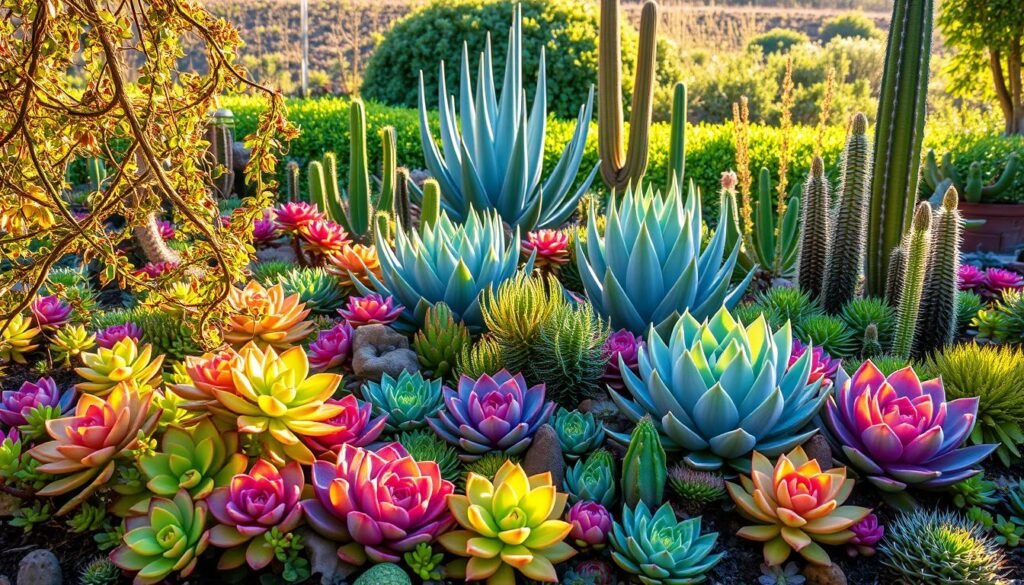
Succulents: Vibrant and Low-Maintenance
Succulents are great for succulent gardens Murrieta because they’re colorful, unique, and easy to care for. They come in many shapes and sizes, perfect for eye-catching displays. Some top picks for Murrieta yards include:
- Agave
- Echeveria
- Sedum
- Aloe vera
Native Grasses: Enhancing Your Landscape
Native grasses Murrieta are perfect for water-saving landscaping. They’re made for the local climate and need little water once they’re settled. They add movement and texture, making your yard beautiful and easy to maintain. Some great options for Murrieta are:
- Deer Grass
- California Fescue
- Blue Grama
- Purple Three-Awn
“Bella Terra Landscape Designs, a leader in drought-tolerant planting projects in Murrieta, CA, has planted over 800 native plants. They were chosen for their extreme drought tolerance.”
Shrubs: Great for Privacy and Low Water Use
Low-water shrubs Murrieta are great for privacy or adding structure without using a lot of water. Many native shrubs are made for the dry climate, perfect for those who care about water. Here are some shrubs to consider for your Murrieta yard:
| Shrub Name | Water Requirements | Ideal Use |
|---|---|---|
| Coffeeberry | Low | Privacy screens, hedges |
| Manzanita | Very Low | Accent plants, rock gardens |
| Coyote Brush | Low | Groundcover, erosion control |
| California Sagebrush | Very Low | Aromatic foliage, attracts pollinators |
By mixing succulents, native grasses, and low-water shrubs in your Murrieta yard, you can create a beautiful, water-saving landscape. It will save water and look great all year.
Tree Installation Services by Local Landscaping Pros
Local Landscaping Pros Murrieta can make your yard beautiful with drought-tolerant trees. Our team ensures your trees grow well in Murrieta’s climate and soil.
Why Choose Local Landscaping Pros?
Choosing us for tree installation has many benefits:
- We know Murrieta’s unique climate and soil.
- We pick the best drought-tolerant trees for here.
- We offer personalized service and attention to detail.
- Supporting the local economy is important to us.
Our Tree Installation Process
Our tree installation process is detailed to ensure your trees’ health:
- We assess the site and analyze the soil.
- We choose trees that fit your preferences and the site.
- We plant them correctly, including the right depth and spacing.
- We mulch and water them to help them grow.
- We provide follow-up care and maintenance tips.
Types of Trees Ideal for Drought Conditions
Here are some drought-tolerant trees for Murrieta yards:
| Tree | Water Needs | Features |
|---|---|---|
| Desert Willow | Low | Showy pink flowers, attractive bark |
| Acacia | Low to Moderate | Fast-growing, provides shade |
| Olive Tree | Low | Evergreen, edible fruit |
A well-designed xeriscaped yard with drought-tolerant trees can reduce outdoor water use by up to 60% compared to a regular landscape.
Choosing Local Landscaping Pros Murrieta means a beautiful, water-wise yard. Contact us today to learn more about our services and how we can help you create the yard of your dreams!
FAQs About Drought-Resistant Landscaping
Planning a drought-resistant landscape in Murrieta means knowing how to plant, care for, and water these plants. Temecula Valley’s summer heat and dry spells are common. Choosing native plants that fit the local climate and soil is key to a thriving yard.
What Are the Best Times for Planting?
The best times to plant drought-resistant plants in Murrieta are fall or early spring. This lets the plants grow roots before summer’s heat hits. Water new trees deeply 1-2 times a week to help them grow strong roots and save water.
How to Care for Drought-Resistant Plants?
Caring for drought-resistant plants means watering them deeply but not often. Watering in the early morning or late evening helps save water. Mulching twice a year keeps the soil moist, controls weeds, and protects roots. Pruning annually keeps your plants healthy and looking good.
Do Drought-Resistant Plants Stil Require Water?
Drought-resistant plants like California poppy and coast live oak need some water to grow. They need deep watering every 2-4 weeks when it’s dry. Grouping plants with similar water needs together helps save water. With the right care, your Murrieta landscape can thrive, using up to 60% less water than non-native plants.
FAQ
What are the best times for planting drought-resistant plants in Murrieta?
The best times to plant drought-resistant plants in Murrieta are fall or early spring. This is when the weather is cooler. It helps the plants grow strong roots before summer gets hot.
How do I care for drought-resistant plants in my Murrieta yard?
To care for drought-resistant plants, water them less but deeper. This encourages deep roots. Mulch around them to keep moisture in and soil cool. Don’t over-fertilize, as these plants need less food.
Do drought-resistant plants require water?
Yes, drought-resistant plants need some water. They need it to grow roots and survive dry spells. Water them often in the first year. Later, they need less water.
What are some popular drought-resistant plants for Murrieta yards?
Popular drought-resistant plants for Murrieta yards include succulents like agave and echeveria. Native grasses like deer grass and California fescue are also good. Low-water shrubs like coffeeberry and manzanita add color and texture with little water.
What are the benefits of choosing drought-resistant plants for my Murrieta landscape?
Drought-resistant plants save water and need less care. They also help local wildlife by providing food and shelter. These plants thrive in Murrieta’s dry climate, making them a great choice.
Source Links
- https://valleycresttakeson.com/watermanagement/resources/top-drought-tolerant-plants-for-california/
- https://www.installitdirect.com/learn/drought-landscape-design/
- https://www.installitdirect.com/learn/drought-tolerant-ground-cover-full-sun/
- https://temeculalandscapeconstruction.com/drought-tolerant-landscaping/
- https://www.installitdirect.com/learn/drought-tolerant-herbs/
- https://www.trees.com/drought-tolerant-evergreen
- https://t.wildflower.org/expert/show.php?id=9258&frontpage=true
- https://designyouryard.com/drought-tolerant-planting-murrieta-ca/
- https://landscapingcompaniesinmurrietaca.com/tag/water-efficient-gardens/
- https://landscapingcompaniesinmurrietaca.com/blog/
- https://ruffandreadylandscape.com/plant-catalog/
- https://landscapingcompaniesinmurrietaca.com/tag/drought-tolerant-plants/

